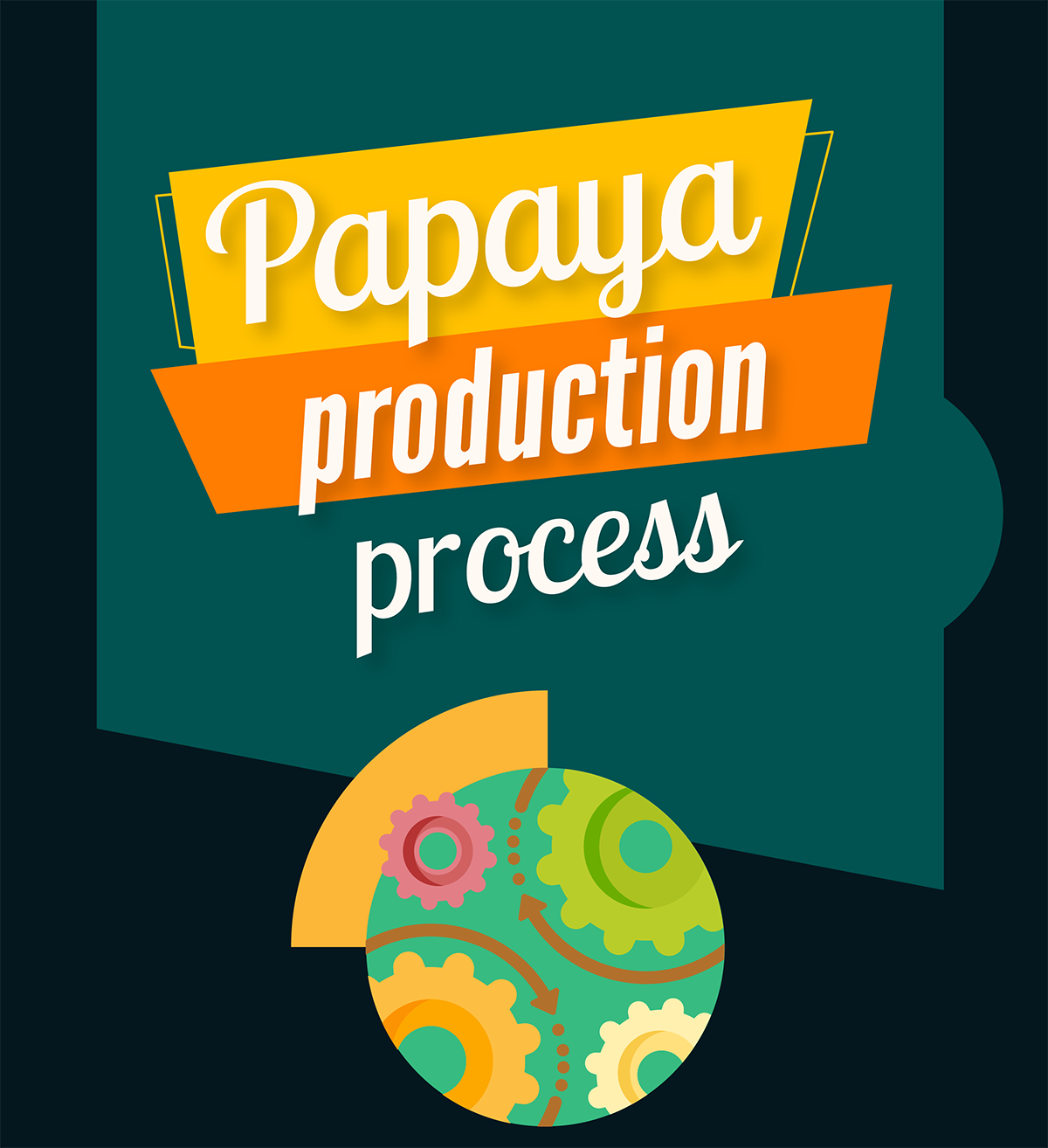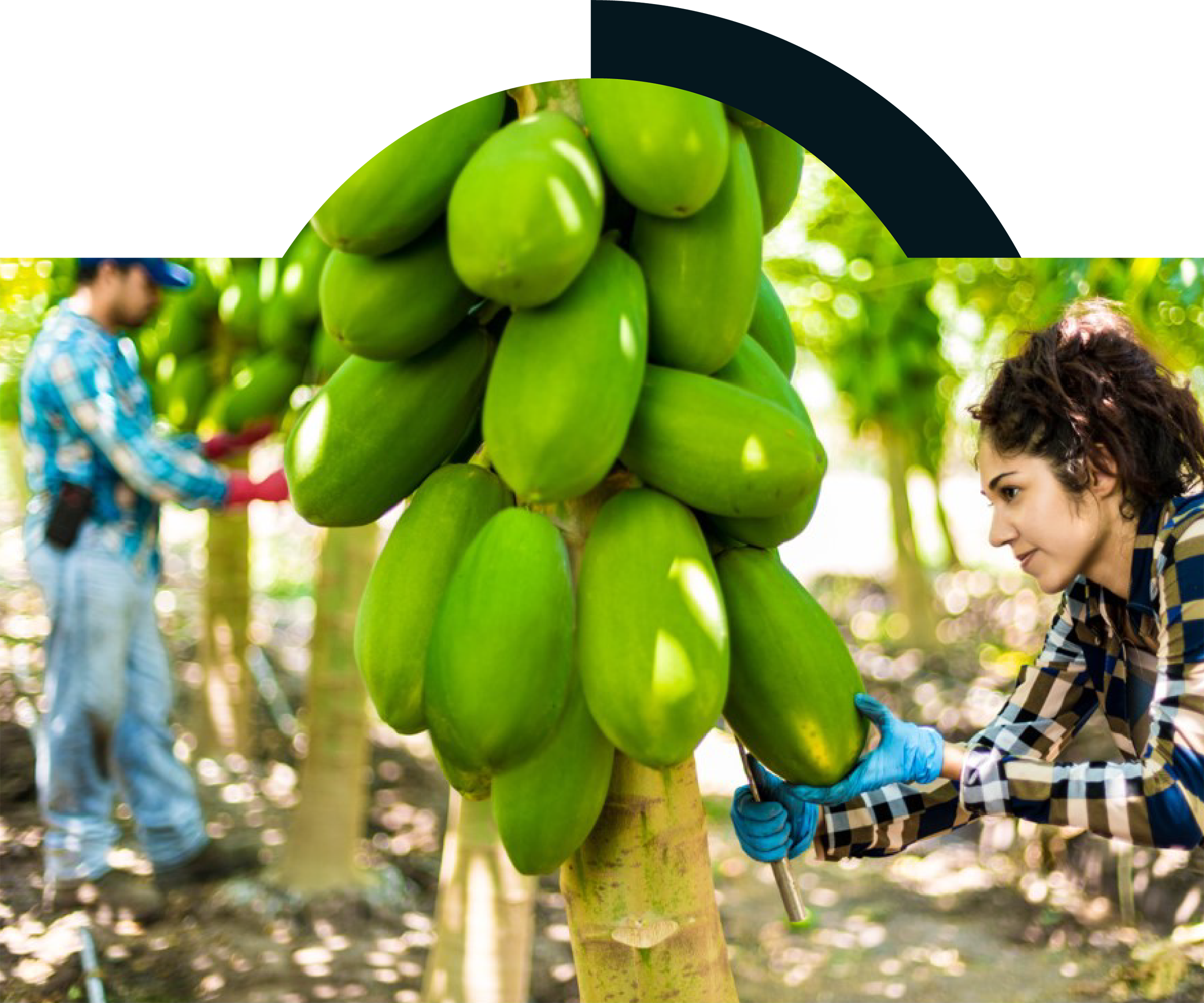

Ground
preparation
The first step is to prepare the land for sowing, where the soil is loosened and borders are made where the plant will be placed later.
Plant
preparation
Generally the plant is produced in a nursery, a seed is sown in trays with cavities for a papaya plant to develop.
The process usually takes from 40 to 60 days depending on weather conditions.
Ground
preparation
Plant
preparation
Seedling
transfer
Once the plant is ready, it is transferred to the orchard where the production will take place.
Containers and seedlings must be handled with great care since their root system and foliar area are very fragile and can suffer mechanical damage during transport, as well as harmful effects due to the sun, wind and humidity.
The most common way is to transport the containers in plastic boxes, covering them with plastic or a blanket to protect them.
Papaya plant
transplant
(sowing)
Between 3 and 4 plants are placed in each space in order to later ensure a high percentage of hermaphrodites.
Planting should be done at a distance of between 1 and 2 meters between plant and plant and 2.5 to 3.5 meters between rows.
The plants are sown manually, taking care that the stem does not remain in the ground so that it does not rot.
Seedling
transfer
Papaya plant
transplant
(sowing)
Fertilization upon
transplantation
It is recommended to carry out the first application of fertilizer as soon as the sowing is done, so that the plant adapts as quickly as possible to its new conditions.
Replanting
On many occasions the seedling cannot adapt to the drastic change from the nursery to the orchard, this is why after 4 to 7 days after transplanting, the positions where this activity failed, another plant must be placed, so that the available area for cultivation is not wasted, this is why the calculation of the seed to be sown should always be 5 to 10% more than required.
Not doing so at this time will cause homogeneity problems in the same orchard.
Fertilization upon
transplantation
Replanting
Sexing or selection of
hermaphrodite plants
It is a practice that is carried out among the first 30 to 45 days after having carried out the transplant, it is a common activity that aims to select the percentage of hermaphrodite plants and/or females that are desired to have. For this practice, the specific aspects of the region where it is produced and the market requirements must be considered.


Weed control


Harvest

Packing
Allowing you and your family
to enjoy healthy food.





